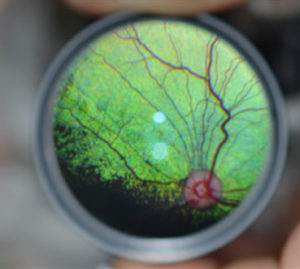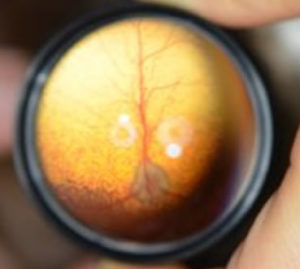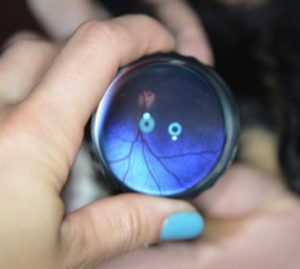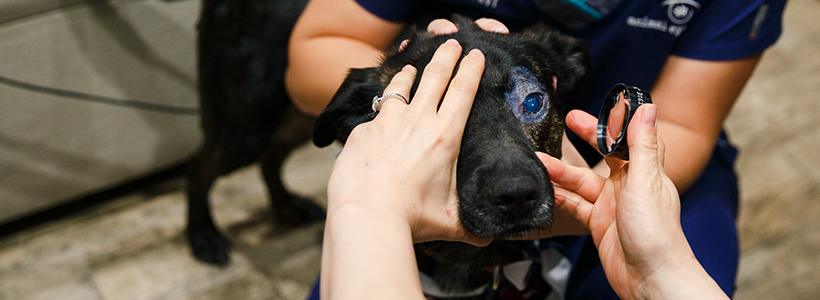PRA (progressive retinal atrophy) in dogs is a disease that causes a very slow death of the small light sensing structures inside the eye called photoreceptors. Very simply, when dogs with PRA are around 6-7 years old (sometimes more or less), the rods and cones in the eye start to fade away. It happens to the rods (night vision) first, so your pet’s night vision will start to decrease. Over time (usually several years), day vision will diminish also.
Q. What causes PRA (progressive retinal atrophy) in dogs?
PRA (progressive retinal atrophy) in dogs is a genetic condition meaning a dog is born with it. Usually, PRA (progressive retinal atrophy) in dogs does not cause problems until a dog is middle-aged, although, it can happen earlier or later. PRA (progressive retinal atrophy) is more common in dogs than cats, although cats may rarely be affected. Many different dog breeds can get PRA (progressive retinal atrophy), but the more common breeds are Labradors, Miniature and Toy Poodles, Australian Cattle Dogs and Cocker Spaniels.
Q. What does PRA (progressive retinal atrophy) in dogs look like?
PRA (progressive retinal atrophy) in dogs causes decreased night vision first, so you may see your dog hesitating to go outside at night or reluctant to go from a lit room in the house to a dark room. You may also see tripping on stairs at night. Sometimes, PRA (progressive retinal atrophy) in dogs isn’t noticed until day vision is decreased.
Q. How do I know if my dog has PRA (progressive retinal atrophy)?
PRA (progressive retinal atrophy) is diagnosed by a full eye examination with a board-certified veterinary ophthalmologist, like Dr. Davis. Your veterinarian may recommend an eye exam if your pet is having difficultly getting around at night or having trouble with their vision. A retinal test called an ERG may also diagnose PRA (progressive retinal atrophy) in dogs if it is very early disease.
Q. How is PRA (progressive retinal atrophy) in dogs treated?
There is much ongoing research about PRA (progressive retinal atrophy) in dogs because children get forms of it as well as pets, but, so far, we do not have a cure for it. There are many things you can do at home though to help your pet adjust to their vision loss. Because the vision loss occurs over many years, most pets adjust very well. Keeping your pet’s environment consistent is key to helping them cope with their vision loss.
Q. I think my pet has PRA, what should I do?
If you think your pet has vision problems, you should schedule an appointment at our office for a thorough examination. We would love to meet your pets and talk with you about any eye condition your pet may have. Come visit us!
PRA (progressive retinal atrophy) Photos

PRA (progressive retinal atrophy) in dogs is diagnosed based on a full eye examination with a board-certified veterinary ophthalmologist, who will examine the back of the eye. This is a normal photograph of the back of a dog’s eye.

PRA (progressive retinal atrophy) in dogs is diagnosed based on a full eye examination with a board-certified veterinary ophthalmologist, who will examine the back of the eye. This dog has PRA (progressive retinal atrophy).

The back of a dog’s eye is examined for conditions like PRA (progressive retinal atrophy) in dogs using special lenses made for this. Here, Dr. Davis is examining the back of a normal puppy’s eye.

